Copper, Canyons, and Snakes…and a Cat
Exploring religious rituals, wicked towns and distinctive terrain, while remembering what was left behind.
Phoenix, AZ
December 29, 2024
I’d rented a U-Haul in Sonoma for our move to Atlanta. My brother joined me on the drive, and my wife would meet us at our new home.
Thru the Central Valley, over the Tehachapis, and across the Colorado, we made our way into Arizona. Then the truck began acting up.
We stopped in Flagstaff to have it checked. I pulled into the U-Haul lot, left my brother with the truck, and went into the office.
They told me it would take till morning to complete repairs (or for us move all our possessions into a new rental).
It was just as well.
When I returned, my brother was baffled. He was stretched over the seat, searching for something behind it. At that moment, he retracted himself as he saw me approach.
“Umm…Did you take the cat?”
“What?”
“The cat. Did you bring him with you? I can’t find him.”
Uh oh.
My wife’s Himalayan was traveling with us. Through most of California, he was in his crate. Out of pity for him being penned, somewhere near the Colorado River we let the cat loose to roam the cab.
It seemed like a good idea at the time. But when we stopped, Basil somehow slipped away (no air quotes around “somehow”).
We searched the lot for several hours. No luck.
When the sun set, we borrowed a flashlight from a U-Haul manager. Thru the darkness I aimed the light everywhere, to no avail.
On the verge of giving up, I pointed it under a row of a half dozen trailers…and finally found our feline. But he was blinded by the light, and ran away.
Adapting to Idiocy
Knowing we’d be in Flagstaff overnight to await repairs, I opted for the better part of valor…and decided against calling my wife. Fortunately, this was before cell phones, so she couldn’t call me either.
I braced myself for the next day. When it came, we’d find Basil, resume our drive, and pretend he never got away. Only one part of that plan actually occurred.
The truck was ready before lunch. Unfortunately, by then Basil was probably some coyote’s breakfast. We never found him.
I faced the reckoning, and called my wife. As I dialed, I wondered which direction I’d be driving after I hung up.
I needn’t have worried. My wife was obviously unhappy. But she’s always understanding, and (most importantly) able to adapt to idiocy she can’t control.
In this instance, I was lucky I was able to blame my brother. He might denounce me, but he couldn’t divorce me.
After leaving my number with the U-Haul office in case our cat turned up, we climbed into the repaired rig, and resumed our ride.
A few weeks later, I received a call from Flagstaff. The U-Haul team had seen Basil. My wife was working as a consultant in San Antonio. She hopped a flight to Flagstaff to rescue her cat.
Someone (or something) else got him first. We’d like to assume Basil was adopted rather than eaten. But Rita never found him.
That was twenty-seven years ago. We hadn’t been to Arizona since.
Till I was dumb enough to revive this story, that was also the last time I’d worried about being divorced.
A Better Reason
But now we’re back, for a much better reason. Our son joined the Air National Guard after graduating Auburn in May.
Alexander completed Basic Training this summer, then started Tech School to learn what keeps F-35s lethal and aloft.
He rotated air force bases, moving from Lackland to Sheppard to Eglin before landing at Luke last month. He’ll be here till mid-January.
But we weren’t about to leave him alone for Christmas. If he couldn’t come to us, we’d go to him. So we did.
We arrived last weekend. After a couple nights in Phoenix, we spent five in Sedona. The surroundings are stunning, resembling scenes from a John Ford film. Because they are…albeit with more spas and better restaurants.
The region’s red rocks are a kaleidoscope of colors that vary as sun and shadows shift thru the day. Looking west thru the lights, the “ghost town” of Jerome comes into view.
Wickedest Town in the West
Up hairpin roads 5,000 ft in the hills, it arose atop 1.7B year-old rock formations rimming the caldera of what was once an undersea volcano. Geologic shifts, tectonic collisions, and subductive uplift pushed ore bodies to the surface, attracting the Hohokam tribe 1,500 years ago.
Spanish conquistadors came almost a millennium later. They arrived on an unrequited quest for gold, leaving extractable copper to acquisitive Americans. These prospectors also grabbed gold and silver the Spaniards missed.
Under auspices of the United Verde Copper Company, shafts were bored, slopes stripped, and pits dug. For three quarters of a century, an assortment of metals was retrieved from one of the richest deposits ever recorded.
The camp boomed, attracting more men to work the mines. Women comprised only 20% of the population, with many practicing the oldest profession.
Vice was rampant as affluence increased. Alcohol, gambling, and prostitution thrived, earning Jerome the monicker of “wickedest town in the West.”
Prosperity persisted with discovery of a second deposit prior to the First World War, enhanced by increased demand for copper during that conflict. Grades were as rich as the mine’s magnates, often exceeding 10% copper and occasionally approaching 50%.
Excepting a brief lull during the short, sharp contraction of 1920, the good times rolled another decade. But during the Depression, copper prices collapsed as depleting mines wasted away.
Companies closed, workers were released, and local buildings teetered under seismic influence and decades of underground blasting. By the late 1950s, the town of Jerome essentially ceased to exist.
As with so many comatose cities that once flourished, tourism revived it. A previously productive place became a collection of gift shops, cafes, and fudge vendors. Like this author, most visitors are among the four million who annually descend on the city of Sedona.
Way Station
That chic hamlet claims only 10,000 permanent residents. The first settlers in Oak Creek valley were farmers and ranchers, enticed by fields and orchards abounding in apple and peach. It evolved into a way station on the coach road from Jerome to Flagstaff.
With rising wealth from the nearby mines, the wagons carried payrolls to financial houses in Flagstaff. On them rode weapons, whiskey, and women… all tempting targets for Apache warriors.
The village requested protection from the U.S. government, and soon received its own post office. Theodore Schnebly became first postmaster, giving his name to the red rock formations that distinguish the area, and that of his wife to the village that nestles among them.
The pace was leisurely and growth languished. Into the 1960s, Sedona claimed only a few hundred souls, many of whom still lacked electrification (at night, the local “dark sky ordinance” leaves the impression most of them still do).
With highway access, the splendid climate and scenery were soon discovered. Tourists and retirees brought infrastructure and development. Restaurants, spas, and galleries proliferated beneath the red buttes where Apache once roamed.
But other tribes remain in the region.
Sincere Beliefs
At St. John Vianney in Sedona, we heard Christmas Eve Vigil Mass in Spanish. But like a smile, the language was universal, in dialect as humble and sincere as any we’ve heard.
Not understanding every word being said somehow reinforced the authenticity of the parishioners’ Faith. It could be seen in their faces. They didn’t go to Mass to go thru the motions.
Yet these Spanish-speaking Catholics aren’t the only locals who hold sincere beliefs. They may memorialize a sacrifice. But another group risks becoming one.
Earlier that day, we rode into the high desert around Sedona. Beneath and between assemblages of sandstone buttes, we’d wandered into the habitat of the Hopi. For their rituals, this tribe goes all in.
Every Christian knows a snake ensnared Eve in the garden and tempted Christ in the desert. But the Hopi also incorporate serpents to their worship.
By biting live ones: diamondbacks, sidewinders, whatever. Then the Hopi dance with the serpents between their teeth.
The tribe considers these vipers umbilical connections linking feeble man to Mother Earth. The underworld is Hopi “heaven”, where departed relatives are believed to reside.
The ceremony occurs in August, and is preceded by days of preparation. Men gather scores of rattlers (among other breeds) into kivas created for the purpose.
By gently brushing them with feathers on the end of spikes, the custodians soothe the serpents to temporary tranquility. At the appointed hour, “honored” warriors arrive bare-bodied above the waist, aside from paint adorning arms and face, and eagle feathers atop their heads.
Lifting the rattlers from their pens, participants place the snakes in their mouths and around their necks. Amid exhortations and chants, the dance begins.
The ceremonial snakes act as slithering conduits for any pleas and prayers. I know what mine would be!
The serpents do occasionally bite back. But the punctures are rarely fatal. We’re told the snakes are (mostly) drained of venom before the festivities.
That local hospitals aren’t overrun is a good sign adequate precautions protect participants. But no white men can act as witnesses.
Till the mid-20th century, they were able to watch. Theodore Roosevelt famously did so.
But as crowds grew, they bred disruption and became distractions. To preserve the dignity of the snake dance, palefaces were soon prohibited from watching the ritual.
Surface of Mars
Our Christmas was quiet. Aside from an afternoon hike on the Sedona View trail, we spent the day absorbing resplendent views from our secluded home. The next morning, we drove north.
We’ve been lucky with the weather. Clouds are rare, and snow has stayed away. But as we ventured into the Navajo Nations, many degrees of temperature disappeared too.
Thursday morning we left Sedona and passed thru Flagstaff. Coming uncomfortably close to scene of our late cat’s “escape”, your correspondent decided to hit the gas.
Continuing north, we descended thru 7,000 feet… and the terrain changed. Crossing the expanse around the Navajo outpost at Cameron is, as my son put it, like shuttling across the surface of Mars.
Desolate, dry, and dystopian, the barren scrabble-scape is interrupted only occasionally…by a rickety shack or stray stallion offering scant evidence for the existence of life.
Winding just north of the road, the Little Colorado gouges a gorge in the stark terrain. Its narrow, deep walls were impressive… till we saw the larger canyon to which they led.
In a region where the youngest rocks are a third of a billion years old, the Grand Canyon itself is a geologic infant (only five million). From river to rim, its terraces reveal sedimentary remains from eight separate retreats of an erstwhile sea.
Pueblo peoples considered the ravine sacred, and made regular pilgrimages to its hallowed caves. On a cold day with sparse crowds, we settled for traveling forty miles along the south rim.
A mile below, the Colorado cleaves the plateau that continues to rise. As it does, erosion keeps widening the canyon, which now spans eighteen miles at its most extensive.
Like years from the calendar, the great gorge keeps shedding its skin. The process is irreversible, and unstoppable.
Transient particles lose their grip, yielding their place of prominence. Into the canyon they slide, mingling with dust that’s gone before.
Time tugs the granules down till they reach the river… which pulls them in, and whisks them away.
JD


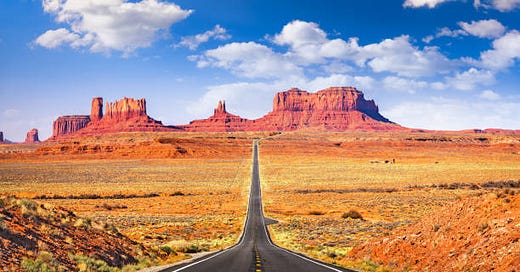


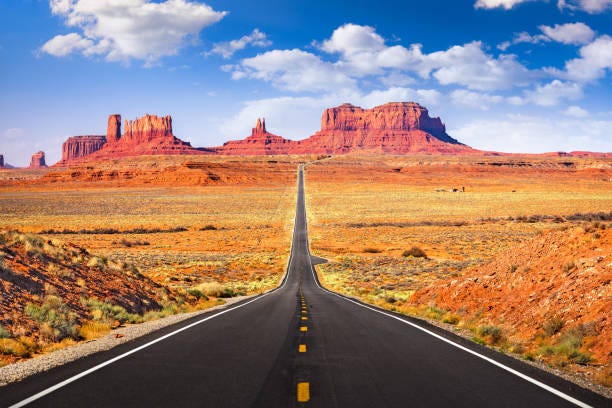
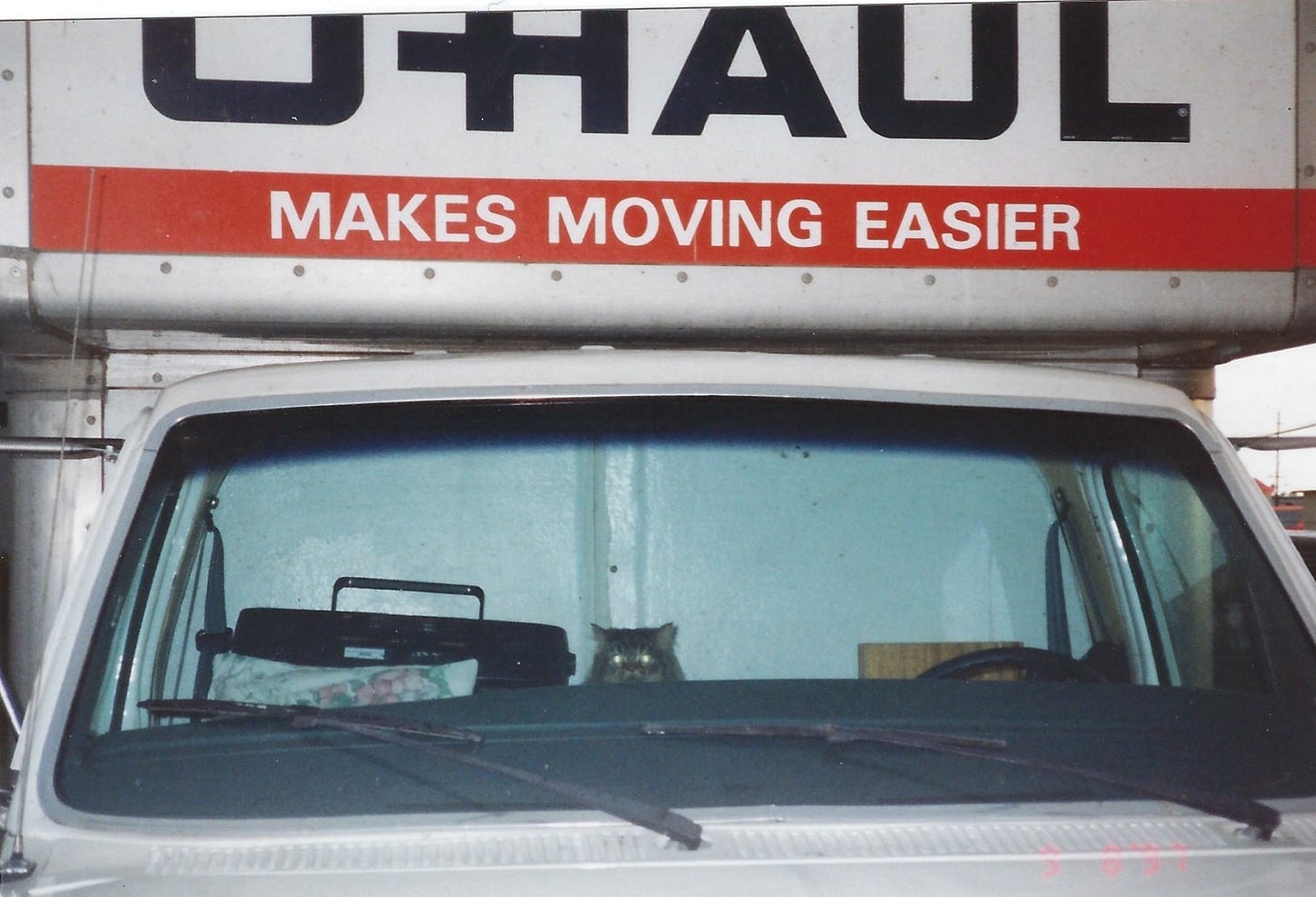
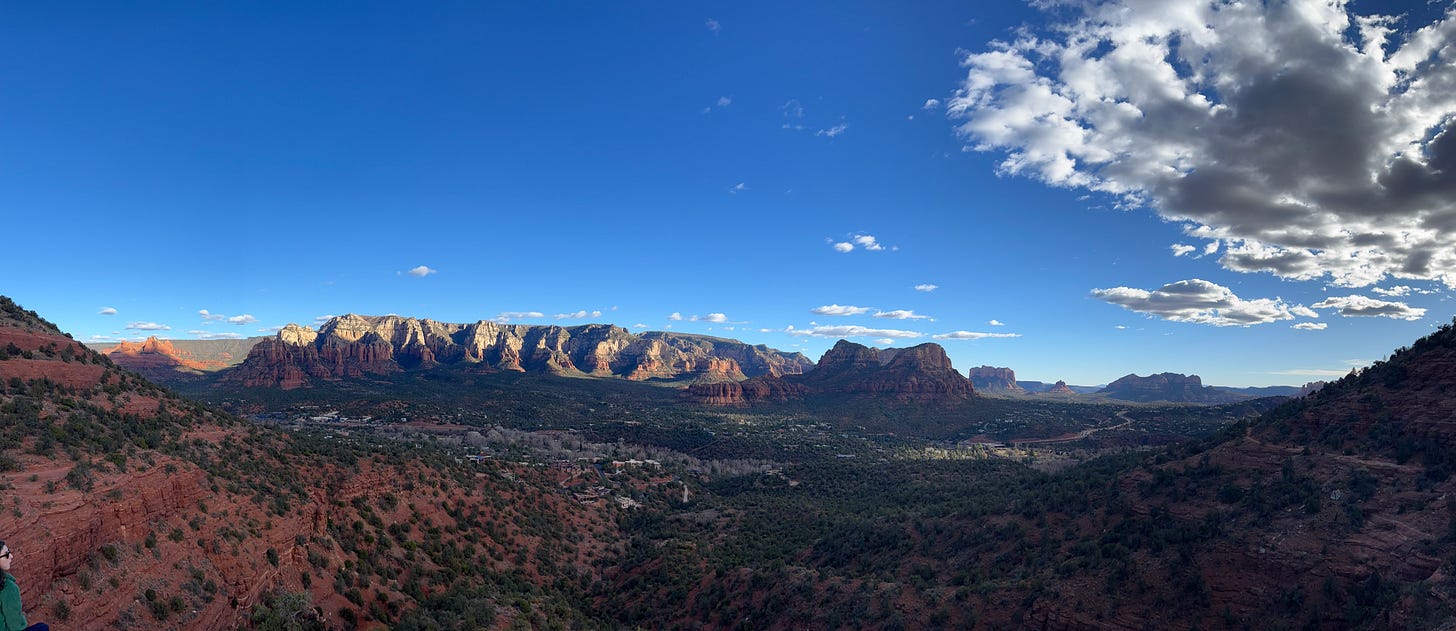
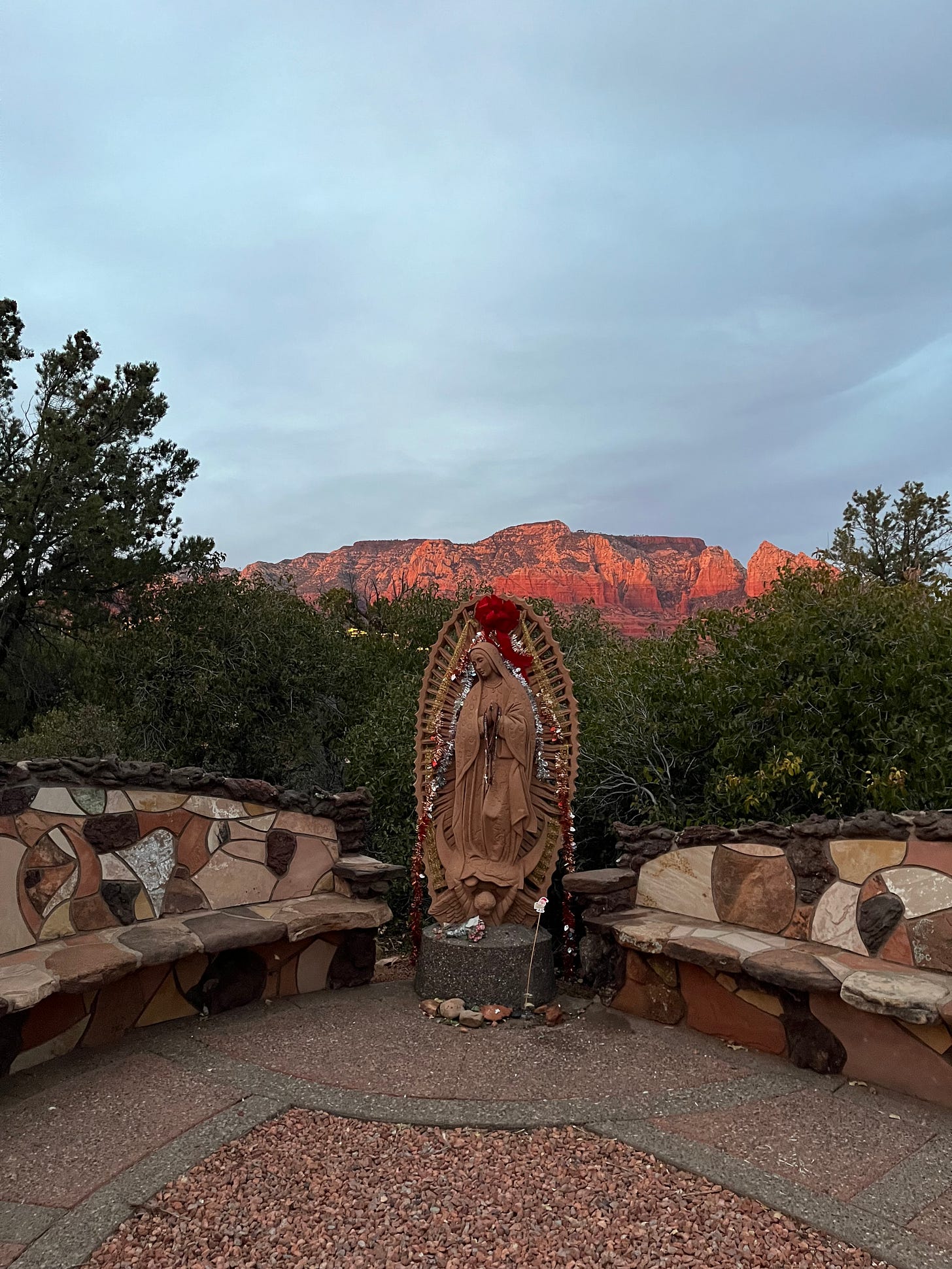

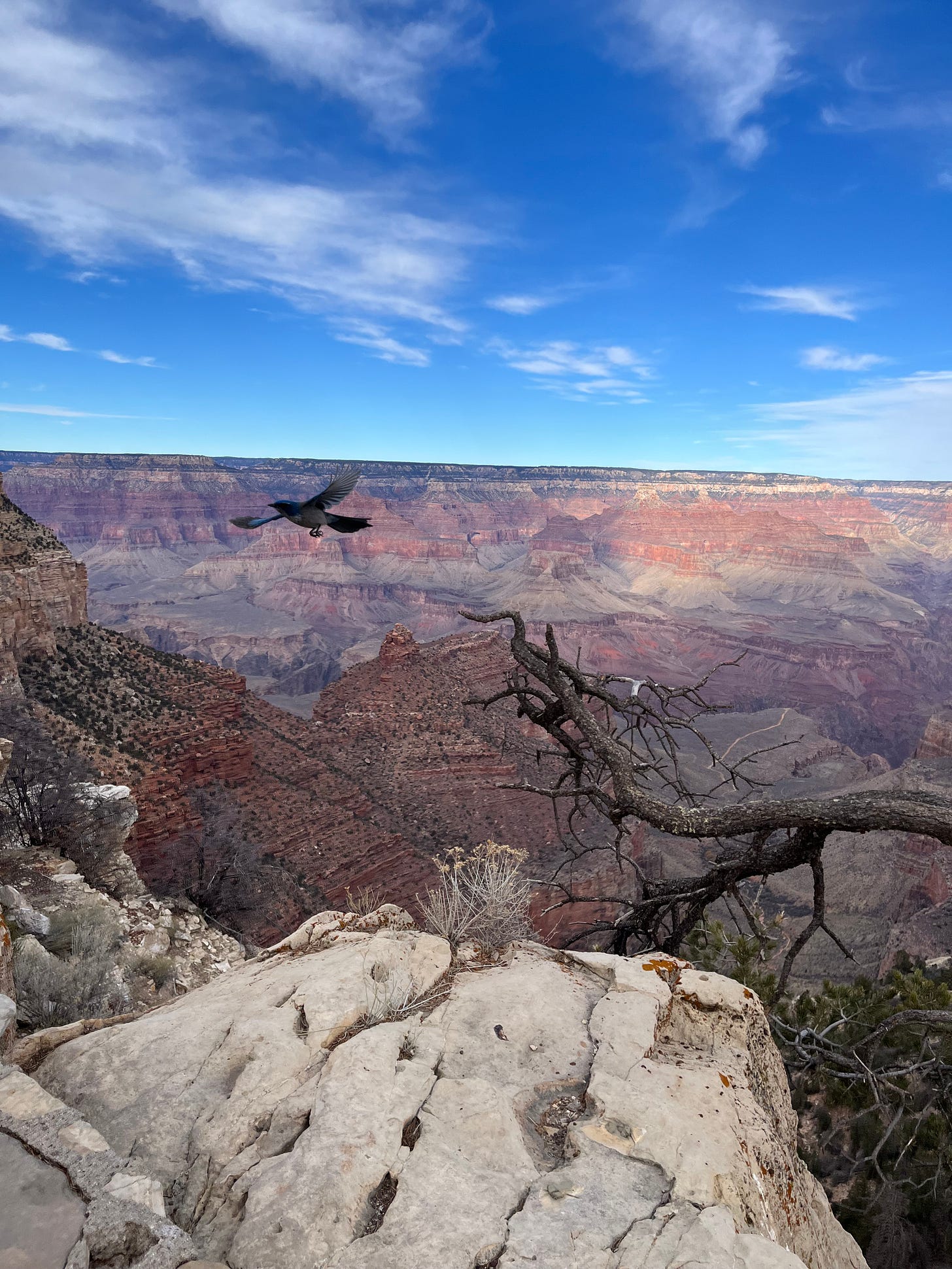
Beautiful piece. I just spent a week at a fancy resort in Paradise Valley. Not exactly "nature," but I found myself a little homesick. Arizona is wonderful, albeit not in the Summer. I predict that our favorite Air National Guardsman develops an affinity for it.
Your last few words were a poem...